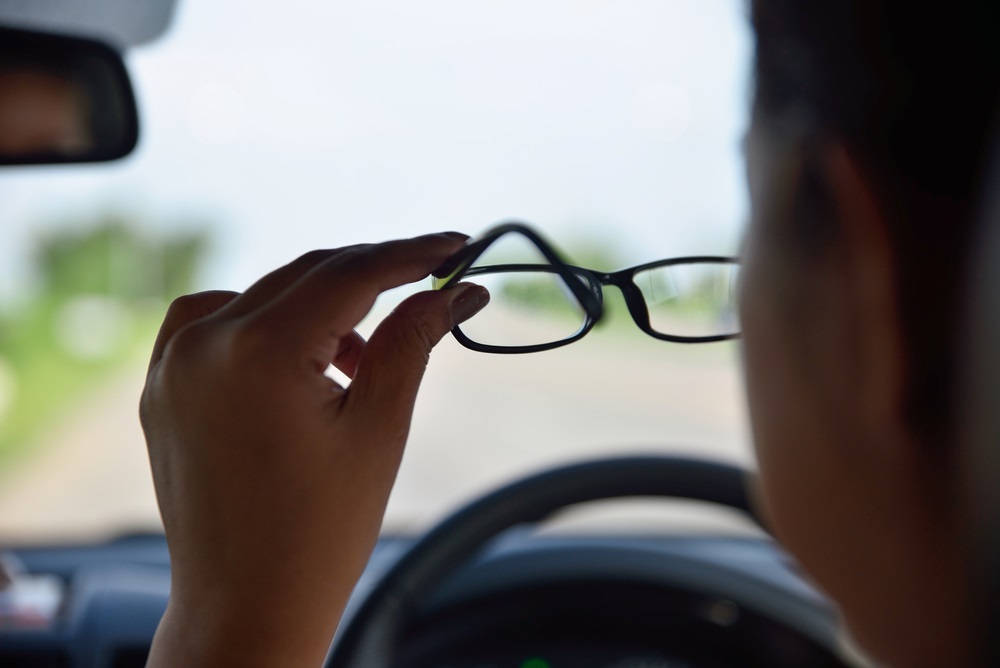Nearsightedness, also known as myopia, is a common visual condition affecting millions worldwide. It occurs when individuals can see objects up close clearly but struggle to focus on distant objects. This in-depth essay will examine the origins and treatment of myopia, offering helpful advice and insights to individuals with this visual impairment.
Contents
Causes of Nearsightedness
It is primarily caused by genetics, with family history being a significant factor. Environmental elements like prolonged reading or excessive screen time might also have an impact. An elongated eye shape is another common cause.
Genetics
If your parents or grandparents have myopia, you are more likely to develop it as well. There is a genetic predisposition to myopia, and it tends to run in families.
Environmental Factors
Prolonged and excessive close-up activities, such as reading or staring at screens, can contribute to myopia development. This is especially pertinent in the current digital era, where many spend extended hours on computers and cell phones.
Eye Shape
Your eye shape significantly affects nearsightedness. An elongated eyeball shape can lead to this condition because it causes light to focus in front of the retina rather than directly on it.
Age
Myopia often starts during childhood and may progress during the teenage years. It stabilizes in most individuals by early adulthood but can sometimes worsen.
Other Medical Conditions
Certain medical conditions like diabetes can increase the risk of developing nearsightedness.
Ethnicity
Research has revealed that myopia is more common in some ethnic groups than in others, pointing to a potential interaction between genetics and environment.
Symptoms
This condition manifests with distinct symptoms. The primary and most noticeable symptom is blurred vision when attempting to see objects in the distance. Because of this blurriness, it may be difficult to read road signs, distinguish faces in the distance, or take in crisp views of far-off landscapes.

Many individuals with myopia also experience frequent squinting, a subconscious effort to improve focus, especially when looking at faraway objects. Additionally, eyestrain and headaches, particularly after extended periods of reading or screen time, are common complaints among those with nearsightedness. These symptoms underscore the importance of regular eye examinations to detect and address myopia promptly. Nearsighted individuals may experience the following symptoms:
Blurred Vision
The most typical sign is a hazy vision when focusing on far-off things. You might be nearsighted if you find reading road signs or seeing the whiteboard in class difficult.
Frequent Squinting
People with myopia often squint to see things more clearly. Squinting temporarily changes the shape of the eye’s lens, allowing for better focus.
Headaches
Eyestrain caused by the effort to see distant objects can lead to headaches, especially after prolonged reading or screen time. This discomfort is a common complaint among nearsighted individuals.
Diagnosis and Testing
Diagnosing myopia requires a comprehensive eye examination by an optometrist or ophthalmologist. This assessment could look at:
Visual Acuity Tests
These assessments test your visual acuity at various distances. Your doctor can ask you to read letters on a chart from a distance.
Refraction Assessment
A refraction test helps determine the exact prescription for corrective lenses. You’ll look through a device called a phoropter while the doctor fine-tunes the prescription.
Measurement of Eye Length and Shape
Your eye’s length and shape are crucial in myopia. Specialized equipment can measure these factors to aid in diagnosis and treatment planning.
Management and Treatment
The most common way to manage nearsightedness is through corrective lenses, such as eyeglasses and contact lenses. These lenses help focus light properly on the retina, allowing for clear vision at various distances. Eyeglasses are popular, providing many individuals with a convenient and effective solution.
Eyeglasses
Nearsighted individuals often wear eyeglasses with concave lenses. These lenses diverge incoming light, compensating for the eye’s elongated shape and allowing it to focus correctly on the retina.
Contact Lenses
An option for spectacles is contact lenses. They can treat myopia because they rest directly on the eye’s surface. Some people prefer contacts for cosmetic reasons or specific lifestyle preferences.
Orthokeratology
Orthokeratology, or Ortho-K, involves wearing specially designed contact lenses overnight.

These lenses temporarily reshape the cornea, providing clear vision during the day without needing glasses or contacts. This approach is popular among individuals who want freedom from eyewear during waking hours.
Laser Surgery
Laser eye surgery like LASIK (Laser-Assisted In Situ Keratomileusis) can be a possibility for individuals seeking a longer-term solution. This procedure reshapes the cornea permanently, reducing or eliminating the need for corrective lenses. LASIK is a popular choice for individuals who want long-term freedom from glasses or contacts.
Lifestyle Modifications
Maintaining good eye health involves essential lifestyle modifications. To prevent nearsightedness and promote overall eye well-being, limiting screen time, particularly in children, and encouraging outdoor activities is crucial.
Adequate lighting in work and study environments can reduce eye strain. Consult an optometrist or ophthalmologist regularly to monitor and properly manage eye issues. Maintaining your eye health can be greatly enhanced by making these small changes.
Reduce Screen Time
Limiting screen time and encouraging outdoor activities is essential to prevent myopia progression, especially in children. Prolonged screen time and eye strain can contribute to developing and worsening myopia.
Proper Lighting
Ensure well-lit work and study environments to reduce eye strain and discomfort. Adequate lighting can significantly affect how comfortably you can read or work on close-up tasks without exacerbating your nearsightedness.
Regular Eye Check-ups
Regularly monitoring and managing nearsightedness can be achieved with routine visits to an eye care specialist. These check-ups are essential to ensure that your prescription remains accurate and to detect any changes in your eye health promptly.
FAQs
Is nearsightedness a hereditary condition?
Myopia can be hereditary, meaning it can be passed down through generations. If your family has a history of myopia, you may be at a higher risk.
At what age does myopia typically develop?
Myopia frequently starts in childhood and might get worse in adolescence. Frequent ocular exams can identify it early.
Can nearsightedness be completely cured with surgery?
While laser surgery like LASIK can significantly reduce it, a complete cure is not always guaranteed. It depends on individual factors.
Are there any natural remedies for preventing childhood nearsightedness?
Encouraging outdoor activities and limiting excessive screen time can help reduce children’s myopia risk.
How often should I check my eyes if I have nearsightedness?
It is advisable to have your eyes checked annually or, as your eye care professional recommends, to monitor and manage your condition effectively.
Conclusion
In conclusion, understanding the causes and management of myopia is crucial for individuals with this visual condition. Various options are available to enhance visual clarity, whether through corrective lenses, orthokeratology, or laser surgery. Visit Faro Optometry to seek regular eye check-ups, effectively manage nearsightedness, and enjoy an improved quality of life.

